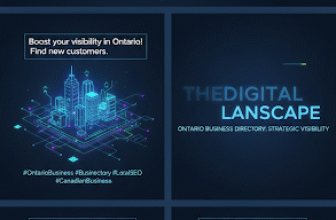
Google’s latest updates to travel feeds within search ads mark a major shift in the travel advertising landscape. With expanded data options, enhanced visuals, and deeper personalization capabilities, Google is helping advertisers in the travel sector connect more effectively with potential customers. This article explores these changes, their benefits, and strategic steps to maximize these ad capabilities.
For advertisers looking to improve their skills in search engine marketing, IFTDM, a leading digital marketing institute, provides specialized courses. With offerings like an SEO course in Delhi, a PPC course in Delhi, and an advanced digital marketing course in Noida, IFTDM equips professionals with the knowledge to leverage Google’s latest ad features effectively. Now, let’s dive deeper into Google’s new travel feed functionalities and how advertisers can make the most of them.
Key Updates in Google’s Travel Feed: What’s New for Advertisers
Google’s expanded travel feed features provide advertisers with tools to deliver richer, more customized travel ads. These updates include several pivotal enhancements:
- Personalized Ad Feeds with Detailed Data
Travel ads now support expanded information, including pricing trends, location-based recommendations, and time-sensitive offers. This enables travel brands to deliver highly targeted and relevant ad experiences. - Enhanced Ad Placements for Broader Reach
Google has introduced more visible ad placements for travel feeds, especially on mobile devices where users frequently conduct travel research. This increase in ad reach offers brands an opportunity to capture more touchpoints in the user’s journey. - Real-Time Inventory Adjustments
Google’s travel feed updates include real-time inventory management, allowing brands to dynamically update ad offerings based on pricing and availability. This feature is critical for travel advertisers seeking to attract high-intent users with accurate, reliable information. - Visual and Interactive Ad Elements
The addition of high-quality images, videos, and other rich media options in Google’s travel feeds provides advertisers with a visually engaging way to showcase their offerings, driving higher click-through and conversion rates.
Leveraging Google’s Travel Feeds to Enhance Advertising Campaigns
Aligning Campaigns with User Intent and Behavior
With Google’s travel feed expansion, advertisers can create ad campaigns tailored to specific user behaviors and intentions. For instance, a user searching for short-haul flights could be shown instant-booking options, while those researching longer trips might see curated, extended-stay recommendations.
Personalized User Experiences
Google’s updated travel feeds allow advertisers to utilize personalization more effectively by analyzing user intent data. By incorporating highly relevant offers and dynamic pricing into ad feeds, travel brands can enhance the user experience, leading to stronger engagement and conversions.
Real-Time Price Adjustments for Competitive Advantage
Real-time inventory updates enable travel advertisers to adjust prices according to market demand and availability. This flexibility improves brand reliability and helps advertisers stay competitive by adjusting prices in real-time based on competitor pricing and demand fluctuations.
Best Practices for Google Travel Feeds
1. Incorporate Rich Media to Enhance Visual Appeal
Use high-quality images and engaging videos within your travel feeds to make your ads visually appealing. Highlight unique features of travel destinations or packages to capture user attention and drive clicks.
2. Use Geo-Targeting for Localized Campaigns
With geo-targeting, travel advertisers can create highly relevant ads for users in specific regions. By targeting local users, ads become more tailored, resulting in higher relevance and engagement.
3. Implement Data-Driven Bidding Strategies
To maximize ad budget efficiency, travel advertisers should use data-driven bidding strategies in line with the real-time insights provided by Google’s travel feed. Automated bidding options can target high-intent keywords, improving ad placement and effectiveness.
4. Promote Exclusive Offers and Seasonal Deals
Highlighting special deals, holiday promotions, and limited-time discounts can improve click-through rates. Analyzing previous ad performance to identify effective offers can guide future campaigns for better results.
5. Optimize for Mobile Experiences
Given the rise in mobile-based travel searches, optimizing ads and landing pages for mobile is essential. Fast-loading mobile pages and straightforward booking processes help increase mobile conversion rates.
Measuring Success: Essential Metrics in Google Travel Feeds
Monitoring these key metrics will help advertisers gauge campaign performance and identify areas for improvement:
- Click-Through Rate (CTR): Measures how effectively your ads are capturing user interest.
- Conversion Rate: Indicates the percentage of users taking a desired action, such as booking or inquiring.
- Cost Per Acquisition (CPA): Assesses the ad spend efficiency in converting leads.
- Impression Share: Shows how frequently your ads appear compared to competitors.
Tracking these metrics allows advertisers to refine their campaigns and ensure maximum performance.
Developing Expertise in Digital Marketing and Travel Ads
To master strategies like these, IFTDM’s SEO course in Delhi provides actionable knowledge on optimizing ads for maximum reach and conversion. Additionally, their PPC course in Delhi offers insights into data-driven bidding, ensuring that advertisers remain competitive in the digital landscape. With IFTDM’s digital marketing course in Noida, professionals can gain a comprehensive understanding of travel ads and the full spectrum of digital marketing strategies, equipping them to make the most of Google’s expanded ad features.
Conclusion: Driving Results with Google’s New Travel Feed Options
Google’s recent travel feed updates present a powerful opportunity for travel advertisers. With enhanced personalization, real-time inventory management, and engaging visuals, advertisers can create ads that resonate with today’s travel consumers. Leveraging these best practices and tracking key metrics will allow advertisers to stay ahead in a competitive market. By investing in advanced training like IFTDM’s SEO and PPC courses, advertisers can optimize their digital marketing strategies, fully utilizing Google’s evolving travel ad capabilities to drive engagement and increase conversions.







